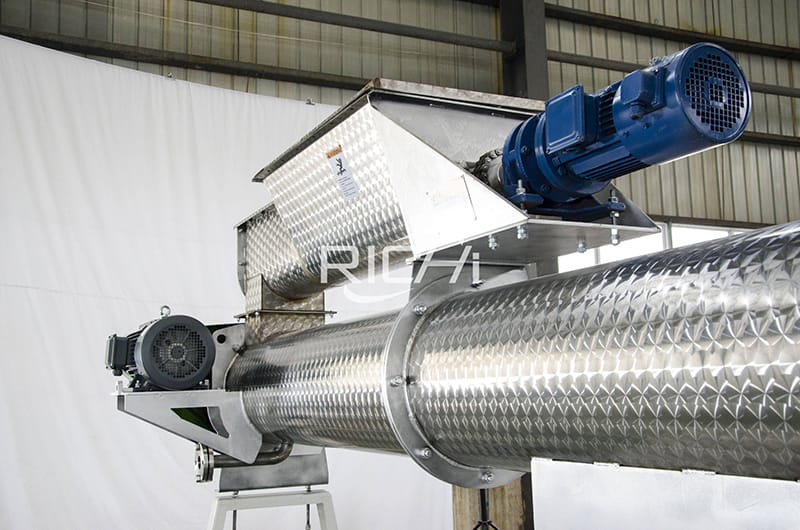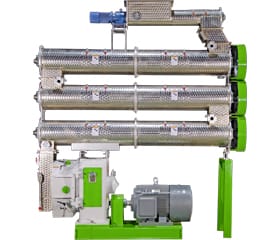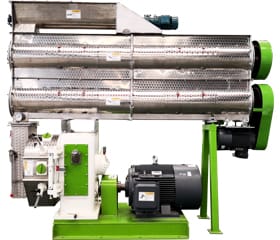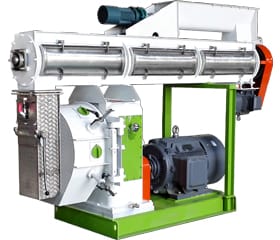Introduction to the use of animal feed quality preserver
Conditioning is a hydrothermal treatment process before feed pelleting. It plays an important role in improving pellet quality, increasing the water resistance of pellet feed, increasing the nutrient digestion and absorption rate of feed, reducing energy consumption for molding, and killing harmful bacteria. Research shows that as one of the important factors of pellet feed quality, it occupies a vital position in the overall quality of pellet feed.
Conditioning means that the raw starch in the raw material can be matured under the condition of steaming and keeping the feed for a certain period of time, that is, under the action of water and heat. Moisture, heat and time are the three important parameters required for starch to change from raw starch to gelatinized starch.
Under the condition of relatively stable moisture and heat, the conditioning time determines the quality of conditioning, and efficient conditioning is the first condition to ensure high-quality pellet feed.
Steam is added in the conditioning process to increase the moisture and temperature of the feed, and at the same time the conditioning passes a certain time, thereby satisfying the necessary conditions for starch gelatinization.

After sufficient conditioning, the gelatinization degree of starch in the product can be greatly increased. The hydrothermal effect in the conditioning process also promotes heat denaturation of the protein in the raw material. The denatured protein is easy to be hydrolyzed by enzyme, so that the protein digestibility of the feed can be greatly improved.
The feed quality preserver is a long-term conditioner. The material is fully mixed with steam in the upper conditioner and heated to above 80℃. After steam conditioning, the material (the material is fully contacted and mixed with steam, and the water and heat exchange is initially completed) enters the lower quality preserver, and the material passes from the quality preserver.
The feed inlet at one end enters, after the agitation and axial advancement of the spiral rotor, it flows out from the lower part of the other end. The material stays in the quality preservation cylinder for 2-6min. After a long time of quality preservation, the moisture penetration is more fully and evenly, and the quality preservation process is completed process. The shelf life is determined by the speed of the adjustable-speed motor, the body structure parameters, and the feeding speed.
1. Introduction to the operation of the feed quality preserver
In view of the characteristics of condensed water generated by steam when it is cold, the equipment manufacturer has designed a temperature-adjustable steam or electric heating jacket on the outside of the quality assurance device to prevent the temperature drop and the generation of condensate by heating the outer wall of the cylinder. After the production is stopped, the heating jacket can continue to heat the cylinder wall for a period of time, so that the moisture of the residual material can meet the safe storage requirements, and avoid the growth of mold and bacteria after the shutdown, thereby ensuring the cleanliness, safety and ease of the feed Clean up.
2. Answers to questions about the feed quality preserver
(1) About the measurement of tempering time
The maturation and quality-preservation time of feed is an important indicator to measure the performance of the quality-preserving device. Since the conditioning process is time-dependent, the conditioning time becomes an important factor in whether the material can reach the target moisture and temperature. Increase the residence time of the material in the quality preservation cylinder. The longer the time, the more fully the material exchanges with steam, water and heat, which is conducive to starch gelatinization and improves the digestion and absorption rate of livestock and poultry.
It can be seen that the shelf life is directly proportional to the effective volume, bulk density and fullness of the barrel. For specific equipment and formulas, if you want to improve the shelf life, you can only start with increasing the fullness of the powder. The adjustment of different fullness is mainly By adjusting the speed of the spiral rotor of the quality preserving device, the fullness of the quality preserving device can reach 40%-90%. It should be noted that the higher the fullness is not the better, the feed characteristics, moisture size and uniformity should be considered comprehensively.
Only a good quenching and tempering process can produce high-quality pellets. After quenching and tempering, the material has a hot feel, it can form a dough when pinched by hand, and can be scattered when loosened. At this time, the material reaches the ideal quenched and tempered state. Of course, there are many factors that affect the quality of pellet feed pellets, and they are also quite complex, and they are limited to quenching and tempering technology, but among the many factors, its influencing factors occupy an important position. As the saying goes, a good start is half of the success, and quenching and tempering is the first condition to ensure the quality of the pellets.
(2) Regarding the process configuration of the feed quality preserver:
In the conditioning section, the conditioner cannot be used alone for the conditioning of feed. Steam is added in the front-line paddle conditioner. The material needs to be mixed with steam before entering the conditioner before it can enter the conditioner. The material in the quality guarantee tube is no longer ventilated with steam.
In the process configuration, the upper layer of the quality preserver needs to be used with a high-speed rotating paddle-type conditioner.
The upper layer can be equipped with DDC and ordinary blade conditioners, and the lower layer of the quality preserver needs to be equipped with a blade regulator with a breaking function. If the quality assurance device comes with a dispersing or uniform feeding device, it does not need to be equipped with a dispersing conditioner. The combination of the conditioner and the quality preserving device, the high-speed quenching and tempering are separated from the heat insulation homogenization, the function division is clear, and the process is simple.
The upper conditioner of the feed quality preserver is high-speed conditioning, which increases the temperature gradient, humidity gradient, and speed gradient between the powdery material and steam, the surface of the powdery material and the inside of the material, thereby improving the conditioning effect. The quality preserving device is a long-term heat preservation and homogenization.
Because the material stays in the quality preserving device for a long time, the water can have enough time to penetrate into the material, and the material conditioning is more uniform, which ensures the excellent conditioning performance. Therefore, the combination conditioner of high-speed quenching and tempering, heat preservation and homogenization is bound to be better than the multi-layer single-tube paddle-type conditioner or the single-layer double-shaft differential conditioner in terms of tempering time and tempering effect.
If you want to built one complete pellet production line in your country, pls send the inquiry to us. We will customized design according to your requirement.



